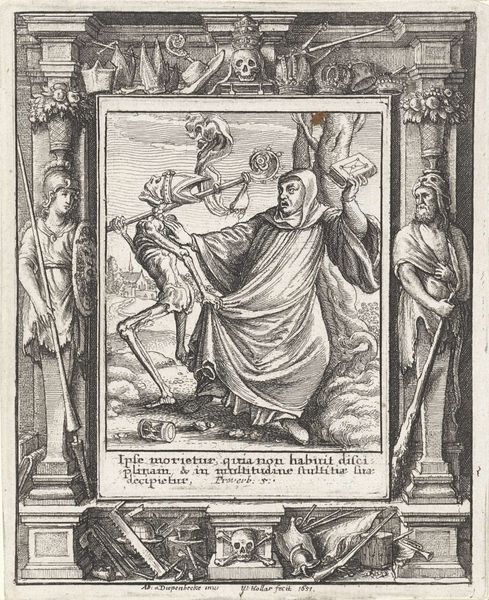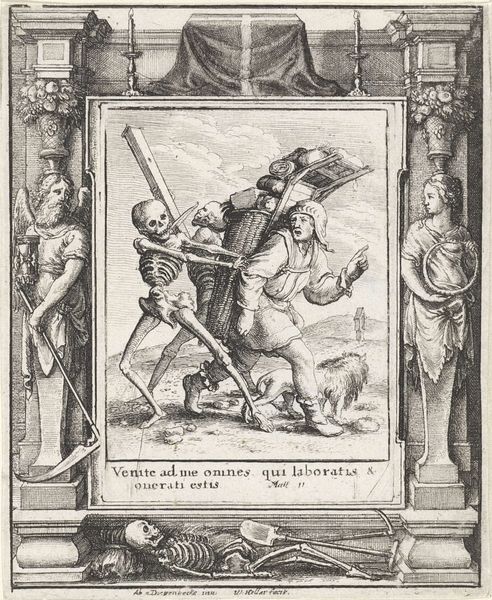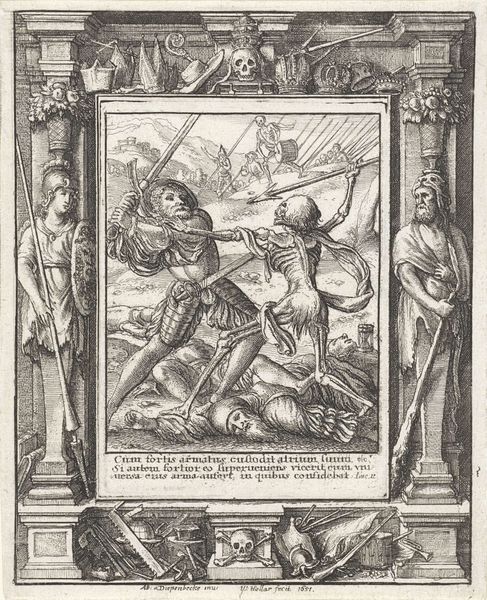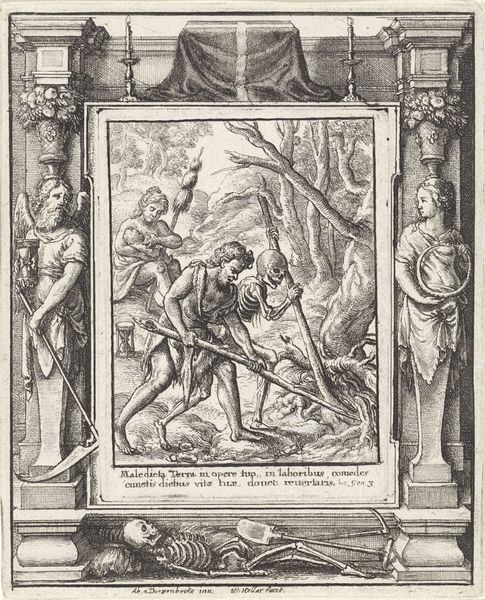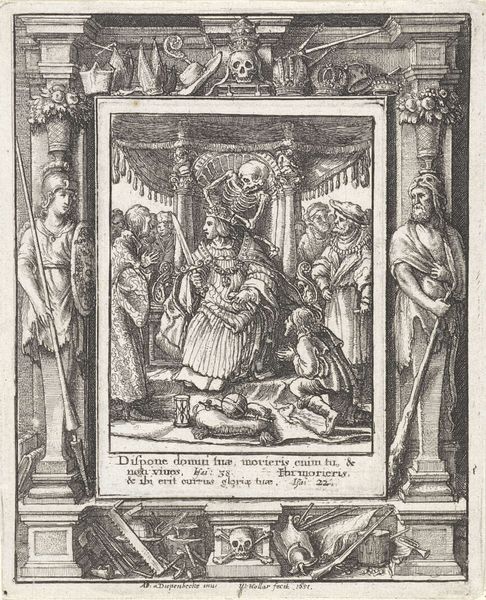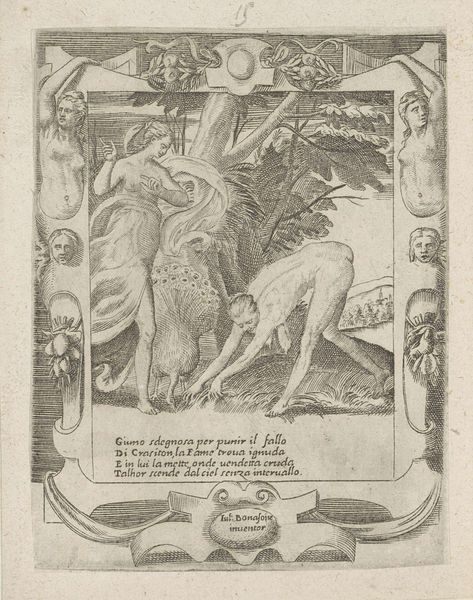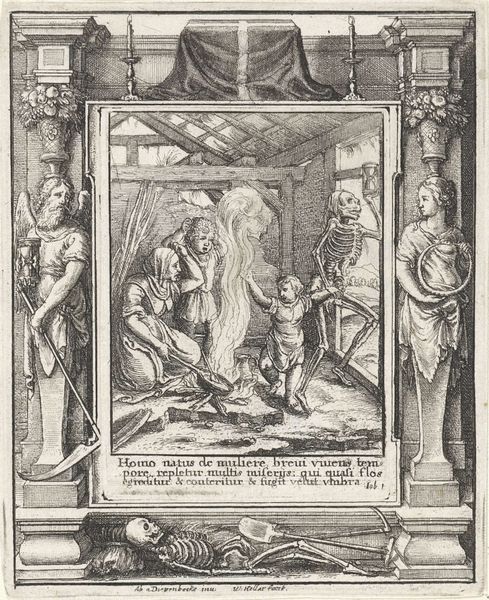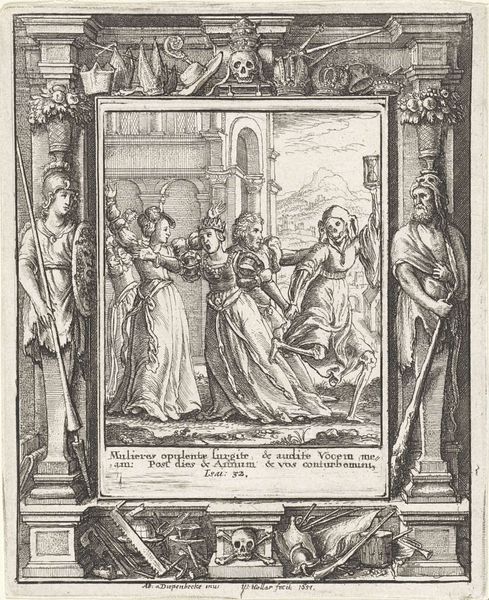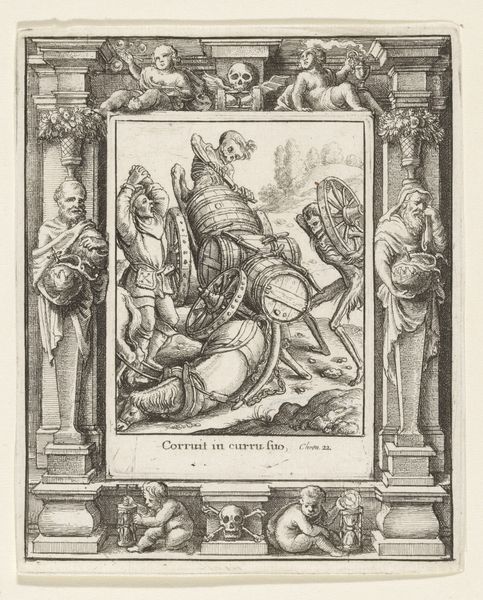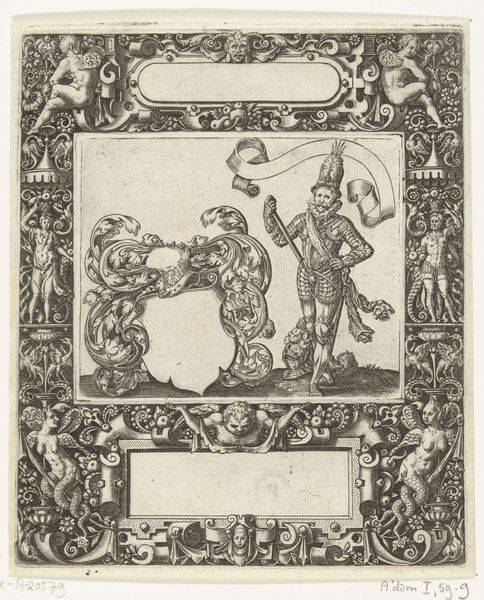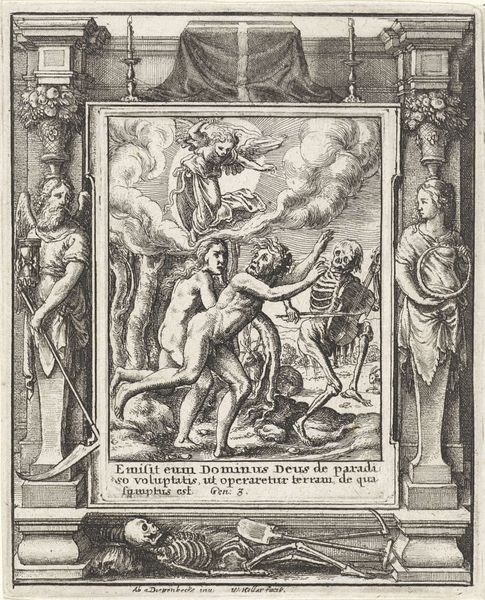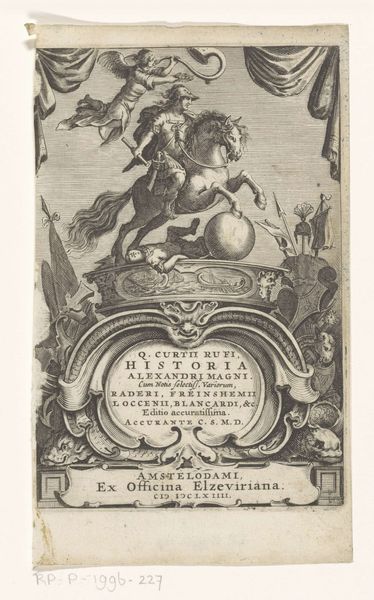
print, engraving
#
allegory
#
baroque
#
pen drawing
# print
#
line
#
history-painting
#
engraving
Dimensions: height 115 mm, width 95 mm, height 77 mm, width 55 mm
Copyright: Rijks Museum: Open Domain
Curator: Here we have Wenceslaus Hollar’s engraving, "The Count and Death," created in 1651. It's currently housed here at the Rijksmuseum. My immediate impression is the striking contrast in textures and the somewhat grotesque yet compelling detail. Editor: It certainly feels charged with a kind of morbid energy. I see a world in the throes of reckoning with power, privilege, and the great leveler: mortality. Curator: Indeed. The line work is incredible, creating depth and shadow with precision. Hollar's use of engraving lends itself well to the dramatic theme, really emphasizing the textures of skin, bone, and fabric. It's almost architectural in its meticulousness. Editor: I can see the artist engaging with themes of social hierarchy challenged by inevitable fate, the symbolic imagery of death reminds viewers about our existence. It speaks volumes about the period’s anxieties surrounding social status and mortality during times of political unrest. Curator: It is an interesting moment in history where you can see different social statuses and that's clearly on display, from the count's elaborate attire to Death's bare bones, or its representation in an allegorical theme in art. Editor: Considering its creation during the Baroque period, we can explore art as commentary during a time of opulence contrasted with frequent battles that were reshaping power across Europe. Death does not discriminate and, actually, makes a mockery of power when everything else ceases to matter. Curator: The allegorical components further underscore its depth, but looking closely I see how his use of line quality gives this rather stark depiction a peculiar life of its own, regardless of context. There is almost a dance to the figures! Editor: Ultimately, it forces viewers to recognize how temporal authority crumbles. And, also invites ongoing dialogue surrounding enduring inequities but ultimately brings back the attention towards mortality. Curator: A rather stunning, yet morose statement. The piece rewards careful consideration. Editor: Indeed, it prompts to discuss death in the broader, socioeconomic framework which is not normally broached in popular narrative about 17th century art.
Comments
No comments
Be the first to comment and join the conversation on the ultimate creative platform.
